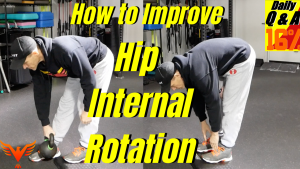Hip internal rotation is essential for the ability to accept force during just about any ground-based activity. It’s also essential for any hinging activity in the gym including all forms of deadlifts, kettlebell swings, split squats, step-ups, and lunges. Here’s a couple easy ways to recapture hip internal rotation when you’ve lost it due to […]
Breathing exercises
Q & A for The 16%… Swayback Posture… What causes it? How do you fix it?
What really causes swayback posture? What exercises and interventions work well to restore movement capabilities and reduce swayback posture? In this video: Swayback posture in a narrow infrasternal angle client What is swayback posture? What causes it? It’s not a kyphosis Is it a breathing problem? Do breathing exercises help? #swayback #posture #billhartmanpt Here’s the […]
Q & A for The 16%… Resources to Help Build Your Model
I get a lot of questions about where you can find more information about how I developed my model of human performance. There are countless resources available. Here’s some foundational resources you may find useful. Keep in mind, this is just the beginning. Recognizing and Treating Breathing Disorders: A Multidisciplinary Approach https://www.amazon.com/dp/0702049808/ref=cm_sw_em_r_mt_dp_U_9uUlEbFG1GBX9 Anatomy of Breathing […]
Q & A for The 16%… Wide Infrasternal Angle vs Narrow Infrasternal Angle Relationships
I’ve been getting a lot of similar questions that appear to be related to understanding my references to wide infrasternal angles vs. narrow infrasternal angles. When breathing is restricted such that full inhalation or full exhalation cannot be achieved, the infrasternal angle (ISA) provides guidance as to what compensatory strategy is being utilized to maintain […]
Q & A for The 16% – Hip Mechanics that Increase Hip External Rotation
Talking about possible influences on hip internal and external rotation. There are plenty of clues in the anatomy. Anatomy texts rarely talk about real, living humans and try to apply dead guy anatomy to movement. It doesn’t work and often creates a limiting, confusing model. Naming muscles external rotators is wrong because as we move, […]




